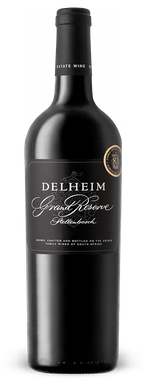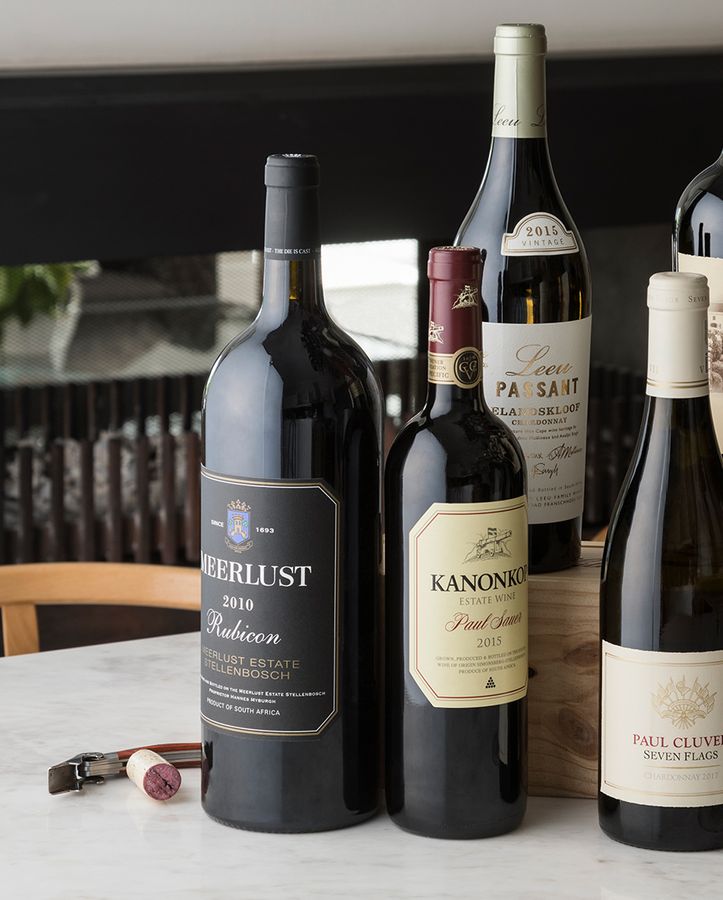Delheim Grand Reserve, the red Bordeaux-style blend from this renowned estate in Stellenbosch's Simonsberg appellation, has, since its maiden release in 1981, garnered a reputation as one of South Africa's foremost red wines. The Grand Reserve 2020 is considered one of the best renditions in its illustrious history. A blend of Cabernet Sauvignon (69%), Cabernet Franc (12.5%), Petit Verdot (12.5%), and Merlot (6%), Delheim Grand Reserve 2020 expresses the nuances of a classic year for Stellenbosch wine.
According to Roelof Lotriet, Delheim winemaker, the 2020 harvest was preceded by mild conditions during berry-set, flowering, and veraison, with grapes ripening evenly during a moderate summer. "There were plenty of cooling breezes in the Simonsberg foothills where the vineyards for our Grand Reserve are grown, with some welcoming rainfall just before harvest," says Lotriet. "Yields were higher than the previous year, which was still showing the effects of the infamous Cape drought, with small, tight grape bunches and fruit displaying intense concentration. As the grapes arrived at the cellar and we saw the evenly ripened bunches, the team agreed that 2020 would be an excellent year for our Grand Reserve blend.”
Delheim's Grand Reserve vineyards are set on the Simonsberg foothills on the estate's Vera Cruz property at between 220m and 280m above sea level. These vineyards are south-west facing and rooted in decomposed granite, the benchmark of Simonsberg terroir. In the cellar, the four different varieties used for the Grand Reserve are kept separate during the entire vinification and maturation process, only being blended before bottling.
"By keeping the Cabernet Sauvignon, Petit Verdot, Cabernet Franc, and Merlot apart during vinification and barrel-aging, we are able to compose a more accurate and focused blend," says Lotriet. "Once bottled, the wine's four components have 18 months in the bottle to integrate into the classic red wine whole Grand Reserve is known for.”
Each variety is fermented with brief punch-downs and pump-overs, a process that takes an average of ten days. The fermented wines are then left on the skins for a further three weeks, allowing for maximum extraction of colour and red wine tannins.
"Maturation is done in 300l French oak barrels, of which 30% are new," says Lotriet. "The slightly larger barrels add further broadness and depth to the wine, and 30% is just the right amount of new wood to give ample structure and texture while allowing for supple, chalky tannins to develop during the 18 months the four various components spend in wood."
Upon completing maturation, the wine is blended and then bottled without any fining agents. Lotriet attributes the reputation of the Delheim Grand Reserve to both its legacy and the unique terroir to which the vines are exposed.
"The foothills of the Simonsberg, where the Grand Reserve vineyards lie, have greater exposure to sunlight than the higher slopes, allowing for even ripening and more fruit concentration than is found in red cultivars growing in the higher Simonsberg regions," he says. "This, to my mind, gives Grand Reserve a specific flavour profile, one of subtle elegance, riveting chalky tannins, and fruit-forward deliciousness.”
The legacy of Delheim Grand Reserve dates back to the late 1970s when former Delheim-owner Spatz Sperling and his winemaker, Kevin Arnold, decided Delheim should increase its red wine focus with an icon wine of the best possible quality. "Sperling sent Kevin to California to learn more about the use of small oak barrels—which were rare in the Cape back then—and upon his return, he and Sperling committed to producing Delheim's first premium red wine," says Lotriet. "This was from the 1981 vintage, with the aim of portraying the best the farm was capable of. They called it Grand Reserve.”
The first three vintages of Grand Reserve were made exclusively from Cabernet Sauvignon. Since 1984, the wine has positioned itself as a Bordeaux-style blend, with Merlot, Cabernet Franc, and Petit Verdot used to complement the leading Cabernet Sauvignon component as desired by the winemaking team.
"Cabernet Sauvignon will always drive Delheim Grand Reserve, with other Bordeaux varieties used as determined by the quality of a specific vintage," says Lotriet. "And as far as quality goes, there are no compromises. In years when the standard of the fruit does not align with the reputation of quality for which Grand Reserve is known, no Grand Reserve is made that year. An icon wine, such as Grand Reserve, can only have one reputation, and that is being known for being the very best Delheim can offer."

